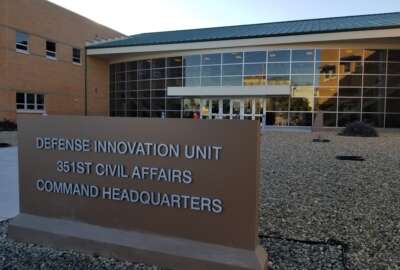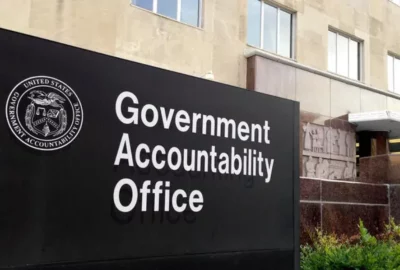Hubbard Radio Washington DC, LLC. All rights reserved. This website is not intended for users located within the European Economic Area.
GSA sending resources, expertise to rescue SAM
Acting Administrator Dan Tangherlini shifted responsibility for the troubled System for Award Management to the CIO's office and the Federal Acquisition Service...
wfedstaff | April 17, 2015 4:19 pm
The General Services Administration is putting some muscle behind its problematic System for Award Management (SAM) program.
The agency took several steps over the past two weeks to get the effort to integrate eight disparate procurement systems back on track. SAM has struggled since GSA launched it July 31.
The major change is to take the Integrated Acquisition Environment, which SAM comes under, out of the Office of Governmentwide Policy and give it to the agency’s chief information officer and the Federal Acquisition Service. The CIO and FAS have dual responsibility to oversee the operational and acquisition parts of the system.
OGP will continue to play a role with IAE and SAM, focusing on industry and agency customer outreach, said Mary Davie, acting FAS commissioner.

“FAS and the CIO’s office have put together a team of superstars,” Davie said Wednesday, during a speech at the Coalition for Government Procurement’s conference in Arlington, Va. “We have functional areas assigned to people who can look at the acquisition piece, people who will look at the functional piece, people who will work on the technical side, the customer engagement and vendor engagement and are working through all the issues along with support contractor.”
She said IBM and the new team are analyzing help desk tickets, trying to understand where the issues are and starting to tackle the things that need to be addressed immediately.
Long term vision for SAM
Davie said FAS and the CIO’s office also are asking about the long term vision for SAM, whether it’s moving it in the right direction and whether SAM’s current platform is modern enough.
Davie and GSA’s deputy CIO Sonny Hashmi will lead the effort, said agency spokeswoman Jackeline Stewart.
“GSA will ensure that the short term fixes and the long-term vision of creating a common acquisition platform across government rests squarely with the leadership of our acquisitions and technical experts,” Stewart wrote in an email. “This will allow the current project manager, the Office of Governmentwide Policy, to focus on ensuring that the IAE meets policy and regulatory requirements from our federal partner agencies and OMB.”
SAM has struggled since its delayed launch. In August, GSA sent IBM a letter of concern because the system was underperforming. GSA hired IBM under an eight-year, $74.4 million contract in 2010.
The latest move is part of acting GSA Administrator Dan Tangherlini’s top-to-bottom review of the agency’s operations. Sources say he questioned why OGP was handling SAM in the first place, especially since the office doesn’t have the technical or acquisition expertise as the CIO’s office or FAS.
Sources also say it may have been OGP’s suggestion to move SAM and IAE into these other offices because of those resources and expertise.
Additionally, Tangherlini wants FAS and the CIO to develop, report and monitor key metrics around the SAM implementation.
Contract recompetes possible
Davie said GSA also is looking at SAM’s acquisition strategy and may end up recompeting IBM’s contract as well as Hewlett-Packard’s contract for help desk services.
“We are looking through all the contracts right now. We’ve had the program for about two weeks and our understanding is they expire in the January-February timeframe,” she said. “At this point, my guess would be some of them would have to be extended while we are working on the acquisition strategy and follow-on. But we are looking through all of them right now.”
For IBM’s part, sources say, they brought in a new project team, including a new project manager, and have diligently tried to fix SAM’s problems.
But GSA’s current acquisition strategy doesn’t include the cloud or a mobile component so recompeting the contract in mid-to-late 2013 may make the most sense.
SAM and IAE are but two of many priorities for Davie and FAS.
She said GSA is leading the governmentwide strategic sourcing effort. Office of Federal Procurement Policy Administrator Joe Jordan announced earlier this month 10 more areas where the government would create federal strategic sourcing contracts.
Davie said GSA is working with a new strategic sourcing council which includes about 10 large agencies.
“We are getting lots of feedback at the very beginning on what might work for an agency, what things they already are tackling, what they could provide to us and how we can work together to craft the right solution and acquisition strategy,” she said. “We will do five or more in fiscal 2013 and five in fiscal 2014.”
SmartBuy moves under FSSI
The five in 2013 will include two that already is in the works, wireless services and devices and large desktop software publisher, under the SmartBuy program.
“SmartBuy is coming into the FSSI umbrella and we will be working on more software type solutions under this program as well,” Davie said. “Based on the commodities we have been looking at, the schedules probably will be a pretty good choice for at least some of these.”
SmartBuy is the Bush administration’s effort to set up enterprisewide software contracts. Similar to other early strategic sourcing efforts, it hasn’t met expectations in terms of use or overall savings.
Davie said GSA is open to using existing contracts and expanding them governmentwide if it makes sense.
Each of the 10 agencies in the council committed to co-lead or put people on a team to look at each of the categories and develop an acquisition strategy. Davie said draft request for proposals could come out in the next four-or-five months.
Price variability a big problem
Davie also said GSA is using the strategic sourcing efforts to test a new portal giving agencies more insight into how much money they are spending for similar products.

Jeff Koses, GSA’s director of acquisition operations, said the portal uses a comparative pricing tool to help GSA, customer agencies and industry get a better understanding of what a product costs.
“When we went off to thousands of contractors and told them their price, the best price and this is the price that is generating most of the sales. Do you want to reduce your pricing? Here’s how,” Koses said. “I thought it was fascinating and really positive that 770-odd contractors came back and reduced their prices. Many came back and said that information was helpful, helped us to make a decision and tell us about other markets.”
He said other vendors didn’t lower their prices because there are good reasons for the variability.
Koses said GSA was fine with whatever decision vendors made, but the important issue was giving contractors information to make good decisions.
Of those who decided to reduce their prices, Koses said on average products dropped by 7.5 percent based on the pilot effort. He said GSA has the best and lowest prices across government, but they have too many prices and that is causing challenges for everyone involved.
OASIS, Networks 2020
Along with pricing variability, Koses and Davie addressed several other hot topics.
Koses said the draft RFP for OASIS, the next big multiple award contract for professional services, has slipped because GSA continues to receive agency comments on the business case. He said GSA will post the redacted business case online before or near when it releases the draft RFP. He didn’t offer a timetable for when GSA would make those documents available.
Under schedule 70, GSA wants to trim the ranks of the 5,000 contractors because at least 1,000 did no business last year. GSA is calling, emailing and contacting those 1,000 to let them know their schedule contracts are going to be cancelled unless the company gives GSA a reason not to.
Kay Ely, director of GSA’s IT Acquisition Center, which runs schedule 70, said getting rid of vendors who don’t sell anything is both a matter of contract compliance issue and cost. She said GSA spends an average of $3,200 to maintain each vendor on the schedule.
Davie also offered an update on Networks 2020, the strategy for the next generation telecommunications contract. She said GSA is working with the Defense Department, the CFO and the chief acquisition officers’ communities to develop the strategy. She said the Networks 2020 acquisition strategy will be out in the first quarter of this year.
RELATED STORIES:
GSA issues IBM a letter of concern for problems with procurement system
GSA to centralize oversight of IT, HR after top-to-bottom review
Agencies ignoring billions in savings from strategic sourcing
GSA ridding schedules of deadwood
Copyright © 2024 Federal News Network. All rights reserved. This website is not intended for users located within the European Economic Area.
Jason Miller
Jason Miller is executive editor of Federal News Network and directs news coverage on the people, policy and programs of the federal government.
Follow @jmillerWFED
-
A look at the origins of the Defense Innovation Unit Federal Drive
-
GAO reviews how the VA is training its claim processors Federal Drive





